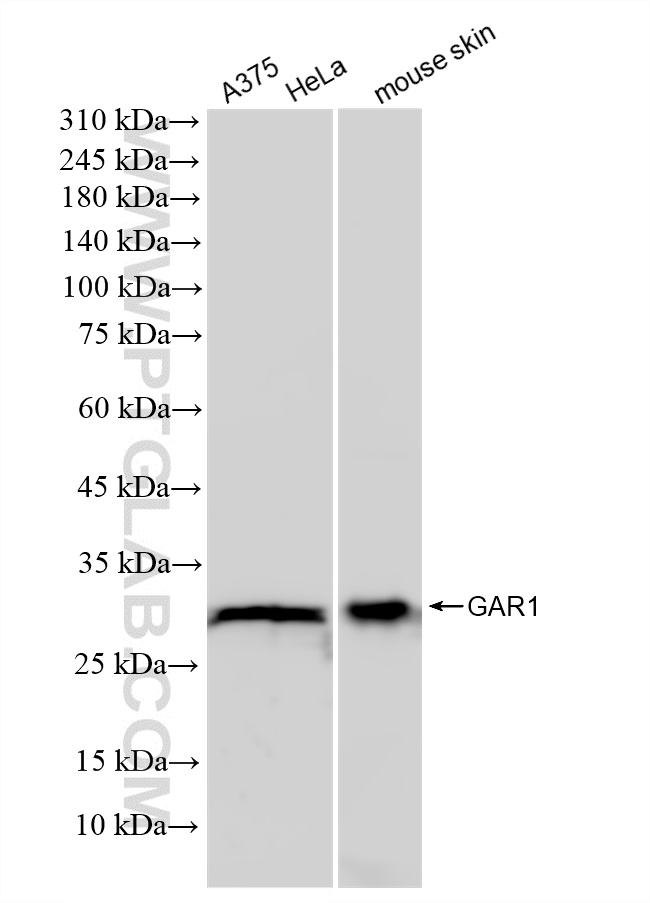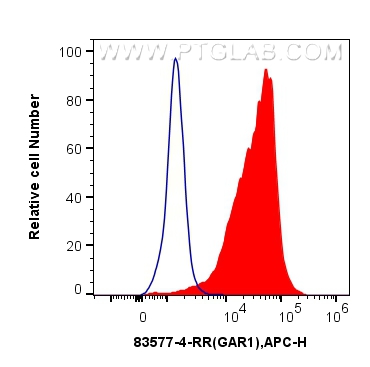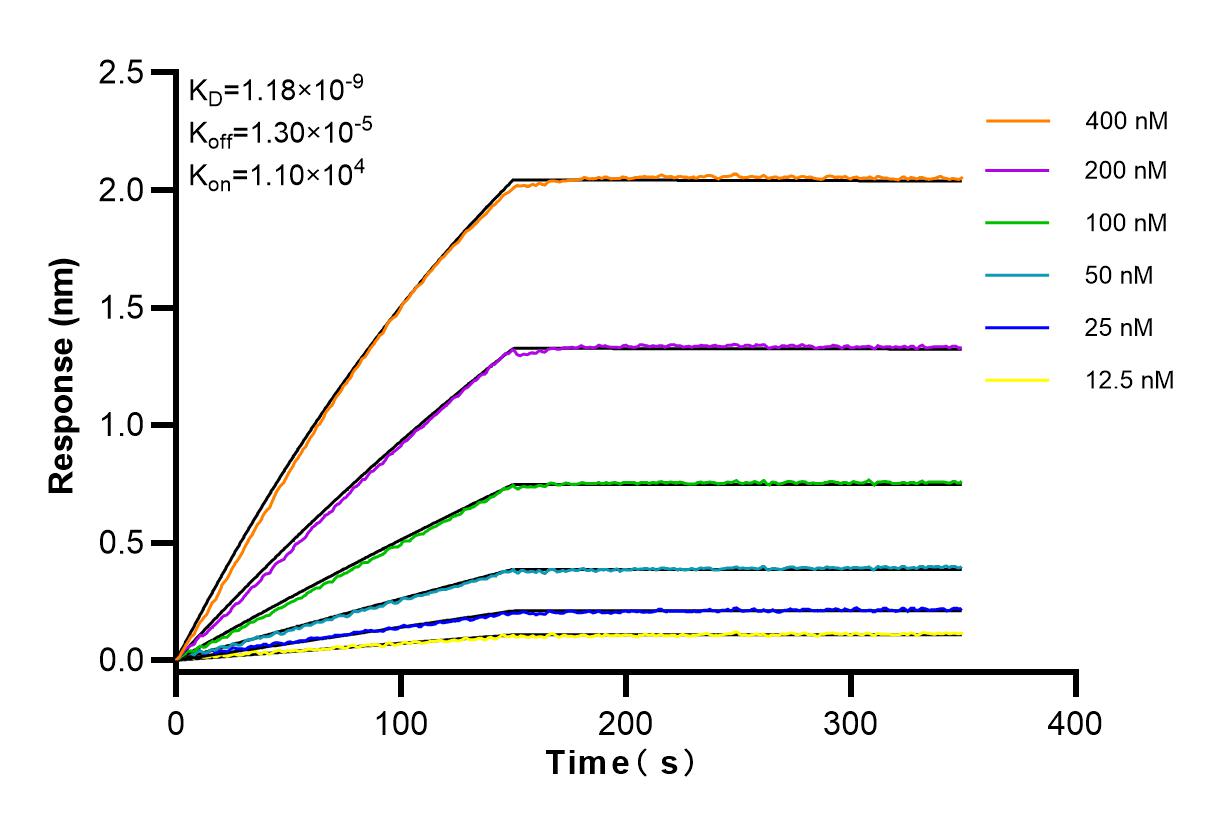验证数据展示
经过测试的应用
| Positive WB detected in | A375 cells, HeLa cells, mouse skin tissue |
| Positive FC (Intra) detected in | K562 |
推荐稀释比
| 应用 | 推荐稀释比 |
|---|---|
| Western Blot (WB) | WB : 1:1000-1:4000 |
| Flow Cytometry (FC) (INTRA) | FC (INTRA) : 0.20 ug per 10^6 cells in a 100 µl suspension |
| It is recommended that this reagent should be titrated in each testing system to obtain optimal results. | |
| Sample-dependent, Check data in validation data gallery. | |
产品信息
83577-4-RR targets GAR1 in WB, FC (Intra), ELISA applications and shows reactivity with human, mouse samples.
| 经测试应用 | WB, FC (Intra), ELISA Application Description |
| 经测试反应性 | human, mouse |
| 免疫原 | GAR1 fusion protein Ag2282 种属同源性预测 |
| 宿主/亚型 | Rabbit / IgG |
| 抗体类别 | Recombinant |
| 产品类型 | Antibody |
| 全称 | GAR1 ribonucleoprotein homolog (yeast) |
| 别名 | snoRNP protein GAR1, NOLA1, 240537A2 |
| 计算分子量 | 217 aa, 22 kDa |
| 观测分子量 | 25-28 kDa |
| GenBank蛋白编号 | BC003413 |
| 基因名称 | GAR1 |
| Gene ID (NCBI) | 54433 |
| RRID | AB_3671189 |
| 偶联类型 | Unconjugated |
| 形式 | Liquid |
| 纯化方式 | Protein A purfication |
| UNIPROT ID | Q9NY12 |
| 储存缓冲液 | PBS with 0.02% sodium azide and 50% glycerol , pH 7.3 |
| 储存条件 | Store at -20°C. Stable for one year after shipment. Aliquoting is unnecessary for -20oC storage. |
背景介绍
GAR1, other named NOLA1, is a subunit of H/ACA and telomerase. Thought is not required for H/ACA protein assembly, GAR1 is necessary for ribosome biogenesis and telomere. H/ACA involves in class specify the sites of uridine-to-pseudouridine. It contains a core domain that flanked by glycine- and arginine-rich(GAR) domains. GAR1 also required for correct processing or intranuclear trafficking of TERC, the RNA component of the telomerase reverse transciptase(TERT) holoenzyme.
实验方案
| Product Specific Protocols | |
|---|---|
| WB protocol for GAR1 antibody 83577-4-RR | Download protocol |
| Standard Protocols | |
|---|---|
| Click here to view our Standard Protocols |


